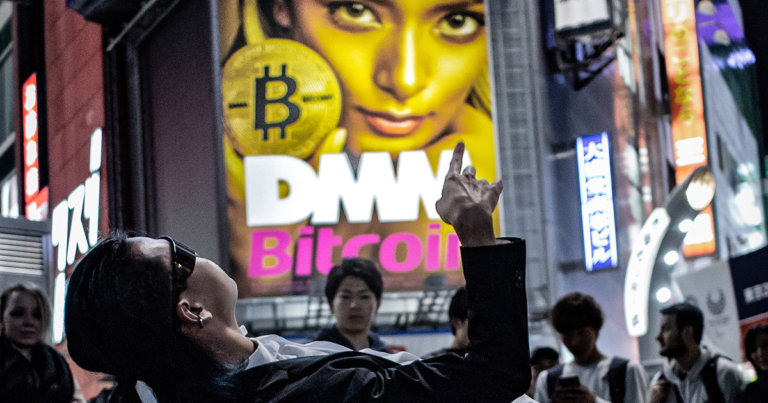 Are retailers prepared for a crypto market boom?
Are retailers prepared for a crypto market boom? Are retailers prepared for a crypto market boom?
In August 2021, the cryptocurrency market saw a huge boom, lifting the value of the cryptocurrency market above $2 trillion.

Photo by Pawel Janiak on Unsplash
In August 2021, the cryptocurrency market saw a huge boom, lifting the value of the cryptocurrency market above $2 trillion for the first time since May. Bitcoin topped with $48000 in August after dropping below $30000 at the end of April and setting a record high during the same month.
Other cryptocurrencies, such as altcoins, Ether, Dogecoins, and Cardano, have witnessed a rise in their prices as well. The prices of cryptocurrencies continued to rise even after the US Senate failed to amend the provision of cryptocurrency tax reporting in its recent infrastructure bill. According to this bill, a broker is an individual providing services that affect the transfer of digital assets for another individual.
The advocates for Crypto have maintained that this definition is too broad, and it can be used to target miners and developers who do not have customers. Despite the fact that the definition in the bill remains unchanged, the US Treasury Department promised that it would not target non-brokers. This event is seen as the coming-of-age moment for the crypto industry, which is believed to finally begin its long-term boom.
With such immense growth potential, cryptocurrencies and crypto markets have become the way forward for several industries, including investments, banking, and retail. Young retailers like Amazon and Expedia are already accepting bitcoins now.
Since these digital currencies can be used to purchase nearly everything- from cars to properties, they are quickly becoming a ‘mainstream’ mode of payment.
Crypto’s Long-Awaited Boom May Be on the Horizon
Coinbase is a well-known American company that operates as a cryptocurrency exchange platform. It increased its revenue by 4900% in quarter two of 2021 due to the steep rise in the prices of cryptocurrencies.
The monthly number of users using the platform for exchanging cryptocurrencies grew to 8.8 million, i.e., a 44% increase from the previous quarter while the trading volume increased by 38%. Besides bitcoin, other types of cryptocurrencies are also breaking records in the crypto market. In quarter two, Coinbase reported that the trading volume of Ethereum went beyond bitcoin. This was the first time Ethereum trading volume was greater than Bitcoin.
After a series of tweets from Elon Musk, the CEO of Tesla and SpaceX, the crypto market’s value increased, even for Bitcoin and Dogecoin. For example: in May 2021, when Musk tweeted that his company was having active discussions over bitcoin’s sustainability, the price of bitcoin rose by more than 17% in less than 24 hours.
Why Should Retailers Be Proactive Now?
To maintain a cutting edge, several retailers have started incorporating cryptocurrency payments. The majority of the customers embracing cryptocurrency as a mode of payment are young people.
Within this demographic, the most common items purchased using crypto are high-value items, such as jewelry or electronics. One of the early adopters of cryptocurrency was the fast-food chain KFC Canada. In 2018, it introduced the “Bitcoin Bucket”, a bucket meal that can be purchased using Bitcoin.
Last month, Phillip Plein became the world’s first fashion company to accept payment in 15 different cryptocurrencies. Following the trend, leading fashion companies like Burberry, Givenchy, and Dolce & Gabbana are all immersing themselves in NFTs, another form of cryptocurrency.
These retailers believe that digital currency and access are the future for Gen-Z consumers who are more inclined to buy e-products. The use of cryptocurrency transactions also reduces the transaction fee for both parties, making e-commerce easy, accessible, and, oftentimes, affordable.
During the pandemic, the demand for cryptocurrencies in retail has been higher than ever before. Shoppers have been forced to find alternatives to physical notes and currencies so as to limit the spread of the coronavirus.
There was also an influx of new customers interested in using crypto as a lot of people spent more time online – thinking about new ways of investing their hard-earned money in financially precarious times.
With such advances in the crypto market, retailers like Walmart are already exploring the possibility of a crypto-friendly user experience. This came after a similar effort by the competitor Amazon some time ago. This indicates that the biggest retailers will likely let customers make purchases using cryptocurrencies very soon.
How Could Blockchain Improve the Retail Experience?
The application of blockchain technologies and cryptocurrencies in retail provides a range of benefits both to customers and retailers alike. Blockchain payments provide faster transaction settlements, reduced fees, and greater security than credit cards.
The same is also true for supplier payments- invoices can be paid in minutes rather than days and weeks – reducing 90% of the administrative costs. Several retail companies like Alibaba and Walmart are using Hyperledger Fabric Platform to track their goods. This eliminates the age-old consumer question: where is my order?
Today, customers want as much information about the products they buy as possible. They are becoming more interested in whether their food is made organically or whether the clothes they buy are ethically sourced. These tech-savvy customers also benefit from the transparency and authenticity associated with blockchain technologies.
Blockchain allows the customer to track the lifecycle, product ingredients, storage conditions, and ownership history. Blockchain equips them with all this information so that they can make a more informed decision.
The use of blockchain technologies can also help under-served customers who do not have access to credit cards or bank accounts. These people who are not served by traditional banking systems struggle with electronic payments (which is quite an inconvenience in these times). These people can now make electronic purchases through blockchain technologies.
The use of blockchain technologies also reduces the transaction fee, thus, reducing the additional burden on the underserved customers. This would be advantageous for the retailers as well since they could access a market of new customers (who were not previously served) and increase their profits tremendously.
This might be the right time for retailers to adopt blockchain technologies and cryptocurrencies in their applications. Not only will crypto keep them updated with the new demands, but it will also expand into a new customer base of people who the traditional systems have underserved.
It also seems that the use of crypto and blockchain technologies in retail will maintain and even improve their credibility in the market since modern customers are getting more and more interested in the products they buy. If the retailers want to appeal to Gen-Z and keep up with the advances in technologies, crypto is the only way forward.




























































